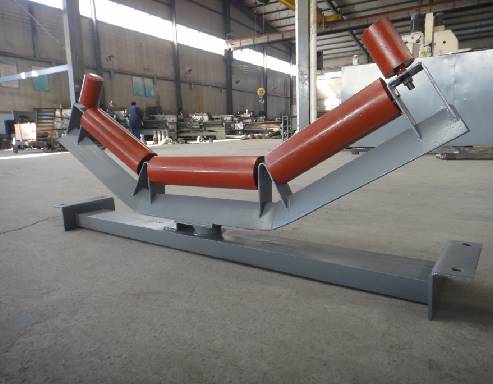 Afrikaans
Afrikaans  Albanian
Albanian  Amharic
Amharic  Arabic
Arabic  Armenian
Armenian  Azerbaijani
Azerbaijani  Basque
Basque  Belarusian
Belarusian  Bengali
Bengali  Bosnian
Bosnian  Bulgarian
Bulgarian  Catalan
Catalan  Cebuano
Cebuano  Corsican
Corsican  Croatian
Croatian  Czech
Czech  Danish
Danish  Dutch
Dutch  English
English  Esperanto
Esperanto  Estonian
Estonian  Finnish
Finnish  French
French  Frisian
Frisian  Galician
Galician  Georgian
Georgian  German
German  Greek
Greek  Gujarati
Gujarati  Haitian Creole
Haitian Creole  hausa
hausa  hawaiian
hawaiian  Hebrew
Hebrew  Hindi
Hindi  Miao
Miao  Hungarian
Hungarian  Icelandic
Icelandic  igbo
igbo  Indonesian
Indonesian  irish
irish  Italian
Italian  Japanese
Japanese  Javanese
Javanese  Kannada
Kannada  kazakh
kazakh  Khmer
Khmer  Rwandese
Rwandese  Korean
Korean  Kurdish
Kurdish  Kyrgyz
Kyrgyz  Lao
Lao  Latin
Latin  Latvian
Latvian  Lithuanian
Lithuanian  Luxembourgish
Luxembourgish  Macedonian
Macedonian  Malgashi
Malgashi  Malay
Malay  Malayalam
Malayalam  Maltese
Maltese  Maori
Maori  Marathi
Marathi  Mongolian
Mongolian  Myanmar
Myanmar  Nepali
Nepali  Norwegian
Norwegian  Norwegian
Norwegian  Occitan
Occitan  Pashto
Pashto  Persian
Persian  Polish
Polish  Portuguese
Portuguese  Punjabi
Punjabi  Romanian
Romanian  Russian
Russian  Samoan
Samoan  Scottish Gaelic
Scottish Gaelic  Serbian
Serbian  Sesotho
Sesotho  Shona
Shona  Sindhi
Sindhi  Sinhala
Sinhala  Slovak
Slovak  Slovenian
Slovenian  Somali
Somali  Spanish
Spanish  Sundanese
Sundanese  Swahili
Swahili  Swedish
Swedish  Tagalog
Tagalog  Tajik
Tajik  Tamil
Tamil  Tatar
Tatar  Telugu
Telugu  Thai
Thai  Turkish
Turkish  Turkmen
Turkmen  Ukrainian
Ukrainian  Urdu
Urdu  Uighur
Uighur  Uzbek
Uzbek  Vietnamese
Vietnamese  Welsh
Welsh  Bantu
Bantu  Yiddish
Yiddish  Yoruba
Yoruba  Zulu
Zulu Understanding Conveyor Belt Components and Their Roles in Material Handling Systems
Understanding Conveyor Belt Parts and Their Functions
Conveyor belts are vital components in many industrial processes. They serve as the backbone for material handling systems across various sectors, including manufacturing, mining, logistics, and food production. To appreciate how conveyor belts work, it's essential to understand their parts and the functions they perform.
1. Belt Material
At the core of any conveyor system is the conveyor belt itself. The material used for the belt can vary based on the application. Common materials include rubber, plastic, and metal. Rubber belts are typically used for their flexibility and durability in heavy-duty operations, while plastic belts are ideal for lighter loads and applications requiring hygiene, such as food processing. Metal belts are often utilized in high-temperature environments or where robust mechanical strength is necessary.
2. Driving Mechanism
The driving mechanism of a conveyor belt system consists of motors and pulleys that provide the needed power to move the belt. The motor's speed and torque can be adjusted to control the belt's movement. Pulleys play a critical role in guiding the belt over its path. The drive pulley is the main pulley connected to the motor, while the return pulley helps to maintain tension and facilitate the belt's return to the starting point.
3. Idlers
Idlers are support rollers that keep the belt on its measured path, supporting it between the drive and return pulleys. These rollers add stability to the conveyor, reducing the risk of belt sag and preventing misalignment. They also contribute to the efficiency of the system by minimizing friction and wear on the belt.
4. Tensioning Device
Maintaining proper tension in the conveyor belt is crucial for optimal operation. A tensioning device ensures that the belt remains tight enough to avoid slippage but not so tight that it increases wear or risks damaging the motor. Various tensioning methods include manual adjustment, automatic tensioners, or hydraulic systems, and selecting the right one is essential for reliable performance.
conveyor belt parts and functions

5. Chassis
The chassis, or frame, of the conveyor system, is its structural backbone. Made from metal or reinforced plastic, it is designed to support all other components and withstand the forces exerted during operation. The chassis must be carefully engineered to ensure stability and strength while allowing for the necessary movement of the conveyor belt.
6. Loading and Unloading Zones
Loading and unloading zones are integral to any conveyor system. The loading zone is where materials are placed onto the belt, which should be designed to minimize spillage and ensure smooth transitions. Unloading zones, on the other hand, may include chutes, hoppers, or other equipment that help materials exit the conveyor system efficiently.
7. Safety Guards and Devices
Safety is a critical consideration in conveyor belt operation. Various safety guards, such as emergency stop buttons and physical barriers, are employed to protect workers who may be in proximity to the conveyor. Additionally, sensors can be fitted to detect issues like misalignment or jams, alerting operators to take immediate action.
8. Control Systems
Modern conveyor belts are often equipped with advanced control systems, allowing for automation and enhanced operational efficiency. These systems can be programmed to adjust the speed of the belt, monitor performance, and integrate with other machinery for streamlined workflow in manufacturing and distribution processes.
In conclusion, understanding the different parts of a conveyor belt system and their functions is essential for ensuring efficiency and safety in various industrial applications. As industries continue to evolve, advancements in conveyor technology will further enhance the capabilities of these crucial systems, solidifying their role as indispensable tools in material handling. Whether for moving heavy loads or facilitating rapid product flow, conveyor belts remain at the forefront of industrial innovation.
-
Revolutionizing Conveyor Reliability with Advanced Rubber Lagging PulleysNewsJul.22,2025
-
Powering Precision and Durability with Expert Manufacturers of Conveyor ComponentsNewsJul.22,2025
-
Optimizing Conveyor Systems with Advanced Conveyor AccessoriesNewsJul.22,2025
-
Maximize Conveyor Efficiency with Quality Conveyor Idler PulleysNewsJul.22,2025
-
Future-Proof Your Conveyor System with High-Performance Polyurethane RollerNewsJul.22,2025
-
Driving Efficiency Forward with Quality Idlers and RollersNewsJul.22,2025





























